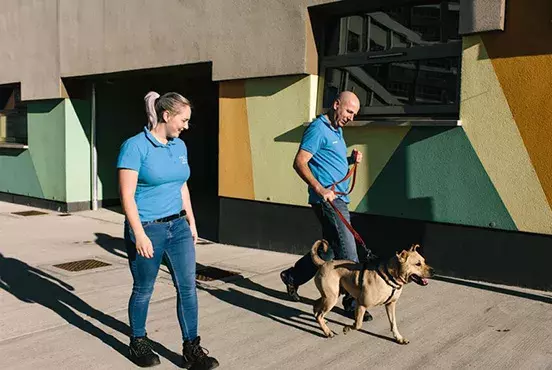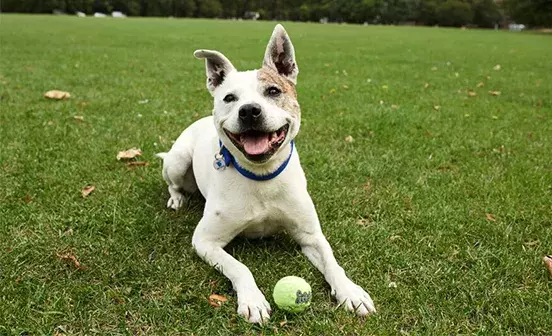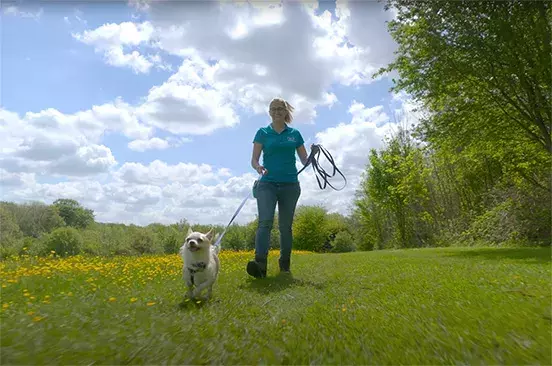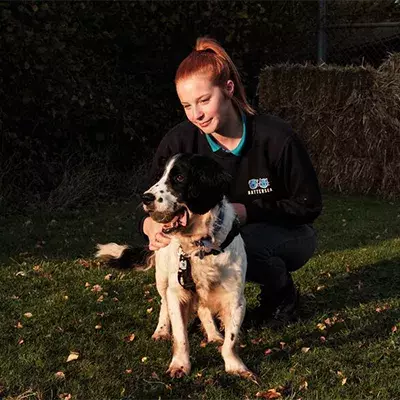Chasing is a natural behaviour for your dog. Hunting and herding breeds in particular have been bred over centuries to have a strong chase instinct.

However almost every dog has a natural tendency toward some chase, or predatory behaviour, and this can be triggered by something they see, smell or hear.
Quite often chase behaviours are directed towards “prey” such as other animals, but they can also be directed towards moving objects such as cars, bikes, people running, and other dogs.
In the wrong situation, chasing or predatory behaviour can be dangerous. However, dogs that do not have an outlet for this behaviour can become frustrated, and often find other potentially harmful ways of expressing it, so the key is to try and provide your dog with alternative ways to chase, but in an appropriate and safe way. We also want to make sure we manage situations where your dog’s chase behaviours might kick in, such as keeping them on a lead around wildlife. Remember, it is our responsibility as dog owners to make sure that our dog does not cause a threat to wildlife or chase other people or dogs too.
Take a look at our video on managing chase behaviours in your dog, or follow along with the steps below:
SAFE WAYS TO CHASE
For dogs who already have a high prey drive, there are a number of toys and activities which can help redirect this behaviour in a safe and fun way. For example, you could use a flirt pole which mimics the movement of a prey animal.
FLIRT POLES
A flirt pole usually consists of a rod and a long cord with a toy attached to the end. You can whip it around on the floor and encourage your dog to run, chase and catch the toy. You ideally need an open space on soft grass where the dog can be off lead or on a short long-line lead.
Show the dog the toy and then drop it to the floor and start to move it around. You want to imitate the movement of “prey” so darting movements along the floor will encourage the most interest. Don’t worry if your dog is not showing interest to begin with, but make sure to give lots of praise for any signs they might want to engage.
Try to keep the flirt pole low to the ground so you don’t encourage too much jumping and make sure to allow the dog to catch the toy on the end too. ‘Misses’ or not catching the toy can build motivation for the game but you do not want your dog to lose interest completely.
It can be helpful if your dog knows a drop command so you can ask them to drop the toy before playing again, but if not, wait and see if they will drop it on their own, or exchange it for another toy or some high value treats. Flirt poles shouldn’t be used with puppies as their bones are still developing and the high impact running and twisting could cause injury.
TUG TOYS
Long chaser-type tug toys can come on a bungee cord or a material line with a fluffy toy on the end. Similar to the flirt pole this allows you to drag the toy across the floor and then also play tug too. These toys are easier to carry out on walks with you and furry material toys are often more likely to grab your dog’s attention.
FETCH AND RETRIEVES
Teaching your dog to fetch a toy can be a good way to encourage running after the toy, grabbing a moving item and then crucially, coming back to you. You can use a variety of toys that your dog is motivated by. Each toy will move in a different way when thrown, which will keep them interested in the chase.
INTRODUCE YOUR DOG TO A DOG SPORT
Although dog sports may not include a ‘chase’ element they involve channelling your dog’s motivation and excitement for the activity in question which can be beneficial when teaching your dog to ignore things in an environment. Many sports such as agility, flyball, canicross and lure coursing are active and engaging for dogs who love to run and have lots of energy.
HOW TO MANAGE DOGS THAT LIKE TO CHASE
As well as letting our dogs get their desire to chase out of their system in a safe way, we can also manage situations where they might come across sights, sounds and smells that could trigger the behaviour.
- Start working on building up your dog’s focus and recall, but in less distracting environments first. If your dog won’t come away from another dog or will go after someone throwing a tennis ball instead of coming back to you for example you know there is going to need to be a lot more practise before you will be able to reliably recall them away from something like a squirrel.
- Keep your dog on a harness and long-line lead while working on their recall and teaching them to focus on you around possible chase distractions. This will stop them running off but allows for some freedom too. Find out more about these in our long-line video.
- Make food rewards an active part of training by using big treats that you can roll and throw along the ground to be chased as a distraction. This also makes the reward much more interesting for and can be used alongside toy play to keep things fresh.
- We can also use the appropriate toy outlets as a reward. For example, you could reward your dog with some play-time with a flirt pole whilst out walking when they successfully come back to you when called.



